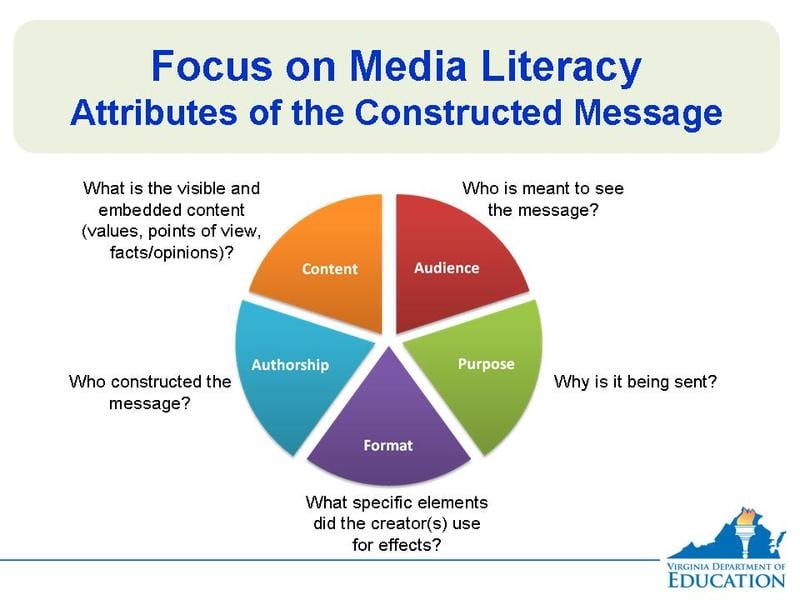Week 6 Blog Curation: Group 2’s Views on Fake News

 Our collective theme for blogging this week resounded in the challenges media literacy instruction presents to both teachers and learners, and in constructing interventions to address those difficulties. Interestingly, while we all opted to work with the Buckingham article, it resonated with each of us a little differently. In general, however, the issue of source credibility and its relationship to prerequisite critical thinking skills ranked high on our collective problem-solving agenda.
Our collective theme for blogging this week resounded in the challenges media literacy instruction presents to both teachers and learners, and in constructing interventions to address those difficulties. Interestingly, while we all opted to work with the Buckingham article, it resonated with each of us a little differently. In general, however, the issue of source credibility and its relationship to prerequisite critical thinking skills ranked high on our collective problem-solving agenda.
In his piece, “Media Literacy and When to Get Critical,” Daniel Justice provides readers an interesting graphic entitled ‘Periodic Table of the Internet.’  “Similar to this graphic organization of web resources,” Justice proposes, “the periodic table is associated with ordering known elements into a system. In the future, I hope media literacy can be taught in such a way that people will immediately associate media elements with the instantly recognizable periodic chart. Imagine your digital literacy as it conforms with these organized columns. Are there elements missing, resources that you think are essential which deserve being petitioned to join?”
“Similar to this graphic organization of web resources,” Justice proposes, “the periodic table is associated with ordering known elements into a system. In the future, I hope media literacy can be taught in such a way that people will immediately associate media elements with the instantly recognizable periodic chart. Imagine your digital literacy as it conforms with these organized columns. Are there elements missing, resources that you think are essential which deserve being petitioned to join?” 
Justice’s ambitious scenario of compartmentalizing sources of information is matched by Siyuan Luo’s assertion that even for digital natives “…it [is] still difficult to survive … fake and trash information.” Luo proposes that “…an information session or workshop” may “help audiences increase their ability to analyze and evaluate the Internet contents;” this type of programmatic initiative could “…be conducted continuously during each school semester … not only … [for] students, but also [for] the teachers and parents.”
 Empowering learners by encouraging critical thinking comprises an important interventional role. “An important piece to address when teaching digital media literacy,” Kerry Clancy writes in her blog entry this week, “is to analyze who the intended audience is. What is the creator of that digital media trying to accomplish? Who are they trying to reach? Rather than becoming one of the audience, we should teach students to analyze the work in front of them.”
Empowering learners by encouraging critical thinking comprises an important interventional role. “An important piece to address when teaching digital media literacy,” Kerry Clancy writes in her blog entry this week, “is to analyze who the intended audience is. What is the creator of that digital media trying to accomplish? Who are they trying to reach? Rather than becoming one of the audience, we should teach students to analyze the work in front of them.”

Crystal Donlan echoes this enterprise in “Real Problems with Fake News,” acknowledging “… emphasis on the incorporation of more interactive media literacy initiatives available to students through my course LMS. In rethinking my own practices and providing more growth opportunities within our existing learning ecology, both I and my students gain new insight.” 
Group 2’s inherent focus on problem-solving bolsters a scaffolding approach targeted at critical thinking. In citing NAMLE’s definition of media literacy, Luo contends that of “…the ability to access, analyze, evaluate, create, and act using all forms of communication…. I think … access, analysis, and evaluation are [the] three most important parts.” 
Continuing along that vein, Justice resolves “Deciphering good sources of educational stock from opinion editorial information may be the most important skill today. It is so because of the journalism industrial revolution and the ability of any emboldened citizen to take up cause and steer narratives based on self, or selfish, interests rather than objective news ethics.” 
In addressing the unique challenges of her teaching and learning context, Clancy also emphasizes invested decoding “… through digital citizenship and personal branding. Personal branding puts forth that a person should ‘brand’ themselves early on BEFORE Google decides how to brand them. For theatre technicians, this can be done by being the FIRST to interpret their work. Before their work is ever critiqued, they should share their own view with the world to tackle critique before it begins.” 
Donlan summarizes, “As problematic as the quest for media literacy may prove…, I am fully aware that the battle will rage on. While there are no quick fixes, I think it is important to remember that ultimately the victory lies in promoting the development of learners who think critically and evaluate discerningly all the information they encounter. Empowering that skillset remains our best defense in the war on fake news.” 

